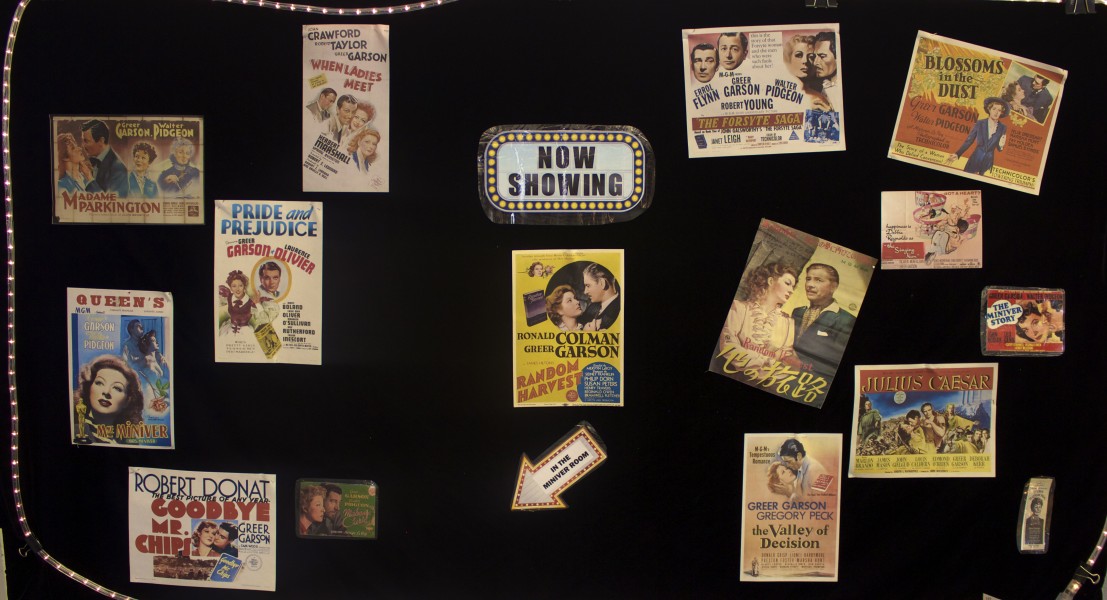Tags
Related Posts
Share This
Garson Tribute
Lauren Eichmann, manager of Public Relations at The Santa Fe University of Art and Design, says that she and Pecos National Historical Park “developed a partnership” in order to “jointly promote” each other’s activities for Greer Garson 110th Birthday Tribute Weekend.
“We decided to host this around her birthday,” Eichmann says, “to honor Greer Garson’s contributions to our campus and pay tribute to her legacy here.”
Coordinating with Christine Beekman, chief of interpretation at Pecos National Historical Park, and Park Ranger Patricia Lenihan, Eichmann says the tours given at The Forked Lightning Ranch Sept. 27 were “treated as an open house.” Normally scheduled and paid for in advance, the tribute event allowed for some 700 attendees to visit the home of Garson and her husband Buddy Fogelson.
“The park [officials] already approached me asking if we can start talking about what we’re doing for next year,” Eichmann says. “I think it would be nice to continue it. Maybe change it up…maybe we get the Film School involved, maybe have tours of Garson Studios.”
On Sunday, Peter Grendle, The Screen’s manager, and Film Student Juliana Ruette displayed a 30-minute compilation of some of the actress’s interviews in an upstairs classroom of Garson Studios (a venue of SFUAD that also owes its existence to the generous Garson). At its conclusion, more than 60 viewers then gathered inside The Screen to watch the actress’s most popular film, Mrs. Miniver (1942).
“Mrs. Miniver [was] pure propaganda,” Grendle says, as in introduction to the screening. He explains that because the 1940’s script, adapted from an original 1939 text, was created before the Americans entered the war, the script “went through a million different script changes to make it meaner.” For example, Grendle explains that the scene in which Mrs. Miniver, played by Garson, slaps the German soldier in the face was not in the original script. “Back then the government was involved in everything Hollywood was doing,” Grendle says, “it wasn’t until the first day [of shooting] they said, ‘why don’t you slap him?'”
To make intentions of the film even more plain, Grendle adds that the title “Buy War Bonds” in the end hit the point home. “And of course, once President Roosevelt saw [the film], he pushed it out,” Grendle says. “And, this is my opinion, the Oscar committee being so biased, gave it all these awards.”
Still, the viewers, most of them already familiar with Mrs. Miniver, gave the actress her praise and exited the movie theater with tears. “This will always be a classic!” one woman shouted on her way out.
In addition to the Mr. Miniver screening and the tribute performances on Sept. 26, Margaret Van Dyk and Morgan Light in Fogelson Library used the honorary named Miniver Room the following day to screen some of Garson’s films, including Julia Misbehaves (1948), selections from When Ladies Meet (1941), Goodbye, Mr. Chips (1939), and Random Harvest (1942). The accompanying gallery upstairs displayed a collection of books, photos, letters, movies, and articles on the actress’s life and career, including an emotional moment of Garson’s divorce from her first husband, Richard Ney, who plays her older son in Mrs. Miniver.
“While the turnout was pretty decent for Friday,” Eichmann says, describing the tribute performances and panel in Garson Theatre, “I wished that others across campus came out. It was mostly theater students, theater faculty so it would have been nice to see more faces across the departments. Maybe if we do this in the future we can bring the campus community together in a more collaborative way and expand the collaboration at Garson Studios.” She adds, however, that for this Tribute Weekend “I’m grateful for everyone’s support and the students who made this successful.”









 Jackalope Magazine is the student magazine of Santa Fe University of Art and Design. Building on the interdisciplinary nature of our education, we aim to showcase the talent of our university and character of our city.
Jackalope Magazine is the student magazine of Santa Fe University of Art and Design. Building on the interdisciplinary nature of our education, we aim to showcase the talent of our university and character of our city.
0 Comments
Trackbacks/Pingbacks